Exceptional Concurrence of Ipsilateral Floating Forearm and Fenton Syndrome with Enucleation of the First Row Carpal Bones: First Case Report?
J.M. Vianney Hope*, J. Paul Bitega, Francis Mugabo, Edmond Mukimbili and Albert Ndata
Department of Orthopedics and Traumatology, Rwanda Military Hospital, Kigali, RWANDA
*Address for Correspondence: Jean Marie Vianney Hope, Orthopedic and Spinal Surgeon, FWACS (fellow West African College of Surgeons), Department of Orthopedics and Traumatology, Rwanda Military Hospital, P.O. Box: 3377 Kigali-RWANDA, Tel: +250789364492; ORCID ID: orcid.org/0000-0003-1127-0586; E-mail: [email protected]
Submitted: 19 July 2020; Approved: 23 July 2020; Published: 25 July 2020
Citation this article: Hope JMV, Bitega JP, Mugabo F, Mukimbili E, Ndata A. Exceptional Concurrence of Ipsilateral Floating Forearm and Fenton Syndrome with Enucleation of the First Row Carpal Bones: First Case Report. Int J Ortho Res Ther. 2020;4(1): 007-011.
Copyright: © 2020 Hope JMV, et al. This is an open access article distributed under the Creative Commons Attribution License, which permits unrestricted use, distribution, and reproduction in any medium, provided the original work is properly cited
Keywords: Ipsilateral; Floating forearm; Fenton syndrome; Enucleation; Full-time employment
Download Fulltext PDF
Simultaneous ipsilateral elbow and perilunate fracture and/or dislocation (floating forearm or bipolar dislocation of the forearm) is a very unusual injury. Its association with scaphocapitate fracture syndrome (Fenton syndrome) is extremely exceptional. We report a case with concomitant ipsilateral radial head fracture, posterolateral elbow dislocation and trans-scapho-trans-triquetro-trans-capitate perilunate fracture-dislocation with enucleation of first low carpal bones at the palmar surface of the distal forearm. This is the first reported case involving simultaneous association of ipsilateral floating forearm and Fenton syndrome with enucleation of first row carpal bones. Open reduction of elbow dislocation, excision and arthroplasty of the radial head, carpectomy of the first row, reduction and screwing of the capitate were performed. The patient made an uneventful postoperative recovery and returned to full-time employment 6 months later.
Introduction
Bipolar dislocation of the forearm (floating forearm) is an unusual injury which associates a concomitant ipsilateral dislocation of the elbow and perilunate dislocation [1-3]. Scaphocapitate fracture syndrome (Fenton syndrome) is very rare and is characterized by fracture of the scaphoid and the capitate with 90° to 180° reversal of the head of the capitate [4-8]. These injuries usually occur with high-energy traumas and the mechanism of injury is fall on extension of both elbow and wrist [1,9-12]. The elbow displaces posteriorly while the carpal bones around the lunate may be displaced volarly or dorsally [1,2,8-11]. Many variations, depending on the direction and amplitude of forces which determine the spectrum of injuries occurring in association with perilunate dislocation, can be observed [1,12-15]. However, enucleation of the first row carpal bones is extremely uncommon condition. We aimed to report the case of a 30-year-old right-handed dominant plumber who felt from an 8-meter-water tank. He presented with ipsilateral concomitant fracture of the radial head, posterolateral left elbow dislocation, fractures of the scaphoid, triquetrum and capitate and perilunate dislocation with enucleation of the first row carpal bones at the palmar surface of the distal forearm. After surgical treatment, he made an uneventful recovery and returned to full-time employment.
Case Report
A 30-year-old right-handed dominant plumber with a long-arm back slab plaster cast presented at our clinic 18 days after his left upper limb trauma due to work accident (fall from an 8-meter-water tank).
On evaluation, the patient complained of pain in the elbow and hand. Additionally, the patient had complaints of numbness in the palm and all fingers. On general physical examination, he was healthy appearing; alert and oriented to person, place and time; responds appropriately; in no acute distress and his general status was conserved. Blood pressure measurement revealed a pressure of 135/75 mmHg, his pulse rate was 80 beats/minute and his respiratory rate was 20 cycles/minute. After removal of the cast, marked swelling, deformity and pain were present at his left wrist as well as the elbow with diffuse tenderness. Passive movements of both the left wrist and the elbow were painful and limited. Neurological examination revealed painful passive stretch of fingers and slight altered sensation in median nerve distribution. He could not oppose the thumb to other fingers. There were healing local skins abrasions over the volar and dorsal surfaces of the wrist. Radial and ulnar pulses could be palpated, although with difficulty due to marked swelling. No additional systemic injury was detected (Figure 1).
On conventional Anteroposterior (AP) and lateral radiographs of the left elbow, forearm, wrist and hand, we found radial head fracture with lateral displacement, posterolateral dislocation of the elbow, fractures of the scaphoid, triquetrum, capitate with 180° reversal of its head and perilunate dislocation with enucleation of first row carpal bones at the level of the distal forearm (Figure 2).
Reconstructed sagittal, axial and coronal Computed Tomography (CT) scans of the wrist confirmed the trans-scapho-trans-triquetro-trans-capitate perilunate fracture dislocation with disorganized and enucleated first row carpal bones at the palmar surface of the distal forearm. The lunate was dislocated volarly and the line connecting the capitate with the axis of the radius passed through the edge of the capitate only. Additionally, the normal rectangular profile of the lunate appeared triangular due to its tilt. There were comminuted scaphoid, triquetrum and capitate fractures. The imaginary line connecting the centers of the radius, lunate and capitate was broken. The CT revealed the 180° rotation of the capitate head. Furthermore, ulnar and radial styloids of the wrist were intact (Figure 3).
Blood examination revealed WBC 5700/μl, Hb 15.5 g/dl, C-Reactive Protein 0.25 mg/dl. Thus, emergency surgery was planned due to the neurologic symptoms such as paresthesia in the palm and all fingers and circulatory disturbance such as diffuse tenderness and swelling in left elbow and hand. Under loco-regional anesthesia (brachial plexus block) and arm tourniquet, Henry approach with volar incision of 4 cm was performed for the carpal fracture dislocation. After skin incision, particular attention was paid on the radial artery and median nerve which was compressed by displaced carpal bones (Figure 4). All first row carpal bones were found in the palmar surface of the distal forearm and then resected (Figure 5). The displaced capitate fracture was fixed by a cortical screw. Lateral approach was carried out to the elbow and resection of the radial head, reduction of the dislocation and radial head arthroplasty were performed. The elbow was found to be stable after manual testing; and no further fixation was required.
Postoperatively, the patient was immobilized using an above-elbow back slab plaster cast for four weeks. Control radiographs of the left elbow and wrist were satisfactory (Figure 6). The wound healed well by primary intention in two weeks. He thereafter underwent intensive physiotherapy to recover elbow and wrist normal Range of Motions (ROM) and strengthen forearm muscles. He returned to full-time employment after 6 months post operatively. At 2-year-follow up, there were no symptoms of neurologic dysfunction. The patient reported no pain during manual labor. The elbow was stable and pain-free; with 130° of flexion, 10° of extension, 90° of pronation and 90° of supination. Active range of motion was measured at 45°/0/50° for extension/flexion in the wrist using the neutral-0 method. Radial and ulna inclination were 15° and 20° respectively. The power of the wrist was decreased compared to the contralateral side; but the Cooney’s wrist function score was good.
Discussion
The term bipolar forearm dislocation was first used by Jupiter et al, in 1994 [10-16]. The clinical picture in which both unilateral proximal and distal dislocation of the forearm are seen is called bipolar forearm dislocation or floating forearm, and there are only about 20 such cases previously reported in literature [1-3,10,11,16-21]. It may be isolated ipsilateral elbow and perilunate dislocation or associated with other fractures. Cases of bilateral floating forearm have been reported [12–22]. Triple dislocation of the upper limb (dislocation of shoulder, elbow and radio-carpal) has also been reported [12,23,24].
The scaphocapitate fracture syndrome includes concomitant fractures through the waist of the scaphoid and a fracture of the neck of the capitate with a rotation of 90° or 180° of the proximal fragment of the capitate, and is a rare form of perilunate dislocation [4,5,7-15]. Jones described this injury as a trans-scapho-trans-capitate perilunar dislocation [25] whereas, Fenton coined the term naviculo-capitate fracture syndrome in 1956 [13]. Later, this term was updated to the modern scaphocapitate fracture syndrome by Monahan and Galasko [26]. About 50 cases of Fenton syndrome have been reported since its description in 1956 [7-9]. Our case displays particular features. There were left ipsilateral concomitant radial head fracture, posterolateral elbow dislocation, trans-scapho-trans-triquetro-trans-capitate perilunate fracture dislocation with enucleation of the first row carpal bones at the palmar surface of the forearm. Additionally, the proximal fragment of the capitate has rotated 180° such that the articular surface faces the distal fragment.
Floating forearm and scaphocapitate fracture syndrome are usually resulting from severe trauma caused by fall from a prominent height or a motor vehicle accident [1,9-12]. Elbow dislocation is observed at a rate of 20% [27]. The diagnosis of scaphocapitate fracture syndrome can be overlooked or prone to be initially missed because of the other multiple body lesions. The incidence of missed initial diagnosis of perilunate dislocation has been reported as high as 25%, which increases with an obvious elbow dislocation in high-energy trauma [1-28]. Herzberg et al, undertook a multicenter study of 166 perilunate dislocations and fracture dislocations from seven centers and found the incidence of perilunate fracture dislocation was twice more common than perilunate dislocation. Displacement was dorsal in 161 (97%), 96% of which were dorsal trans-scaphoid perilunate fracture dislocations. Open injury and delayed diagnosis adversely influenced the results. And the diagnosis was initially missed in a hefty 41 (25%) cases of isolated carpal injuries [15]. In our case, as per previously reported cases, the cause of injury is a severe trauma which followed an accidental fall from height (an 8-meter-water tank). Contrary to these previous reports, the enucleated first row carpal bones displaced volarly. There were healing local skin abrasions and no missed injuries.
The mechanism of injury is fall on extension of both elbow and wrist [1,2,8-11]. According to Fenton, following a fall in a position of dorsiflexion and radial deviation of the wrist, force is transmitted from the radial styloid process to the scaphoid and then to the capitate causing fracture of both bones [12-15,29,30]. Stein and Seigel found from studies on cadavers that the radial styloid process does not strike the scaphoid in radial deviation and they suggested that acute dorsiflexion causes the scaphoid fracture and in maximum dorsiflexion the dorsal lip of the radius strikes the neck of the capitate causing it to fracture. The proximal fragment of the capitate rotates through full 180° such that the articular surface faces the distal fragment [14,30,31]. The carpal bones around the lunate may be displaced, usually the result of a hyperextension injury. In perilunate dislocations, the carpal bones are displaced volarly or dorsally. Many variations, depending on the direction and amplitude of forces, can be observed. These forces also determine the spectrum of injuries occurring in association with perilunate dislocations [1]. The spectrum of perilunate dislocation includes trans-scaphoid perilunate, perilunate, trans-scapho-trans-capitate perilunate and trans-radial styloid in the order of frequency [12-15]. The sequential destabilization starts through the body of scaphoid with fracture or scapholunate interval with dissociation and dislocation of the rest of carpus around lunate and proximal scaphoid or lunate. Then the force transmits through the space of Poirier between lunate and capitate with disruption of luno-triquetral articulation, resulting in dislocation of lunate into carpal tunnel. In trans-radial styloid perilunate dislocation, fractured radial styloid and rest of the carpus dislocates around lunate with further progressive sequential destabilization distal to lunate through the space of Poirier or capitate with fracture or hamate and triquetrum or luno-triquetral interval [12]. Our patient represents an extremely rare illustrative case of concomitant ipsilateral floating forearm and Fenton syndrome with enucleation of the first row carpal bones. We attribute radial head fracture and posterolateral elbow dislocation to axial force acting on the elbow while the elbow was in hyperextension, abduction, valgus and supination positions; and axial force acting on the wrist in palmaflexion position caused the first row carpal bones to enucleate volarly.
In most reported cases, floating forearm and Fenton syndrome occur in young men aged between 20 and 30 years, and it is exceptional in children. Swant and Miller report a case of scaphocapitate syndrome in a 12-year-old boy [10,32]. Fenton syndrome in both wrists was described by Strohm et al, in a 21-year-old woman who jumped out of a window with suicidal intentions [33]. Limitation of joint movement, deformity and pain are generally the presenting symptoms. There is a fracture and an open wound at wrist and elbow in most of these cases [10]. Our patient was a 30-year-old male who, following an accidental fall, presented ipsilateral floating forearm and Fenton syndrome with first row carpal bones enucleation. There were associated local skin abrasions on volar and dorsal surfaces of the wrist. Additionally; fractures of the radial head, scaphoid, triquetrum and capitate were noted.
Radiography is the main tool of diagnosis. Elbow dislocation is obvious while carpal dislocations are complex and difficult to adequately evaluate without multiple radiographs taken in various projections. In standard wrist radiographs, the AP view may appear relatively normal while lateral radiographs reveal loss of co-linearity of the radius, lunate and capitate. In cases in which breaks are present in this line, an intracarpal malalignment should be strongly suspected [1,6-9,15,25-28]. In our case, AP and lateral radiographs have been complemented by serial reconstructed sagittal, axial and coronal CT scans to adequately analyze lesions.
The treatment follows the principles of management of each individual lesion separately [11]. Treatment options include closed reduction and cast immobilization, percutaneous pin fixation and open reduction and internal fixation (ORIF) through a dorsal, volar, or combined dorsal-volar approach. The type of approach is controversial, although dorsal incision is advocated as it provides sufficient visualization of the fragments and reduction of both the fracture and the dislocation and significantly reduces operative time. However, the median nerve may be compressed in the carpal canal by the lunate and the patient may display signs of median nerve injury. In cases where decompression of the median nerve is necessary, the palmar approach is possible [1-6]. Reduction of the elbow dislocation is mostly achieved by closed reduction while lateral approach is used for radial head resection and arthroplasty. Complications are infrequent. Chen reported a case where an isolated bipolar dislocation was diagnosed after 6 weeks and underwent resection of the proximal row [2]. Reported complications of Fenton syndrome are Kienböck’s disease in about 8% of the lunate, scaphoid nonunion; carpal collapse with arthritis of the wrist joint [6-7]. In this case, Henry palmar approach was preferred to achieve the median nerve decompression. Carpectomy of first row was done. Anatomic reduction and fixation of the capitate fracture resulted in bony healing without the development of avascular necrosis or bony collapse. Prompt anatomic reduction and stable elbow in this patient provided the best chance of recovery to the patient. At 2-year-follow up, the functional results were satisfactory and the patient has returned to his full-time employment.
Conclusions
Simultaneous ipsilateral floating forearm and Fenton syndrome with first row carpal bones enucleation is an exceptionally unexpected concurrence in practice. Careful thorough clinical examination and urgent adequate management should be performed in such case.
Ethical Approval
This study was approved by our Department review board.
Statement of Human and Animal Rights
All procedures were performed in accordance with the ethical standards of the responsible committee on human experimentation (institutional and national) and with the Helsinki Declaration of 1975, as revised in 2008.
Written informed consent was obtained from the patient to publish this article, along with his photographs.
- Asker H, Ertürk C, Atlay MA, Bilge A. Bipolar dislocation of the forearm (floating forearm). Acta Orthop Traumatol Turc. 2014; 48: 102-105. DOI: 10.3944/AOTT.2014.2824
- Chen WS. Concurrent perilunate dislocation in patients with elbow dislocation: Case reports. J Trauma. 1994; 37: 504-507. DOI: 10.1097/00005373-199409000-00029
- Daoudi A, Elibrahimi A, Loudiyi WD, Elmrini A, Chakour K, Boutayeb F. Bipolar forearm dislocation or floating forearm (a case report). Chir Main. 2009; 28: 53-56. DOI: 10.1016/j.main.2008.11.006
- Bennis A, Benabbouha A, Ouzaa MR, Lamkhanter A, Benchakroun M, Jaafar A. Fenton’s naviculo-capitate fracture syndrome (about a case). Pan Afr Med J. 2017; 26: 206. DOI: 10.11604 / pamj.2017.26.206.9288
- Dailiana H, Papatheodorou LK, Malizos KN. Scaphocapitate fracture: Two cases with follow-up over 5 years. J Wrist Surg. 2015; 4: 174-178. DOI: 10.1055/s-0035-1549290
- Kumar A, Thomas AP. Scaphocapitate fracture syndrome: a case report. Acta Orthopædica Belgica. 2001; 67: 185-190. https://bit.ly/30GgHpv
- Nunez Jr FA, Luo TD, Jupiter JB, Nunez Sr FA. Scaphocapitate syndrome with associated trans-scaphoid, trans-hamate perilunate dislocation: A case report and description of surgical fixation. Hand. 2017; 12: NP27-NP31. DOI: 10.1177/1558944716668837
- Vance RM, Gelberman RH, Evans EF. Scaphocapitate fractures patterns of dislocation, mechanisms of injury, and preliminary results of treatment. Bone Joint Surg Am. 1980; 62: 271-276. PubMed: https://pubmed.ncbi.nlm.nih.gov/6987237/
- Apergis E, Darmanis S, Kastanis G, Papanikolaou A. Does the ten scaphocapitate need to be revised? A report of 6 cases. Journal of Hand Surgery. 2001; 26: 441-445.
- Kandis H, Yucel I, Saritas A, Gunes H. Floating forearm: Perilunar and elbow dislocation without a fracture. J Coll Physicians Surg Pak. 2010; 20: 697-698. DOI: 10.2010/JCPSP.697698
- Najeb Y, Essadki B, Latifi M, Fikry T. Bipolar dislocation of the forearm. Chirurgie de la main. 2007; 26: 62-64.
- Prasad K, Dayanandam B, Gakhar H, Attarwala U, Karras K. Concomitant elbow and perilunate dislocation: floating forearm. The Internet Journal of Orthopedic Surgery. 2011; 8: 1-4. https://bit.ly/3g10Zfk
- Fenton RL. The Naviculo-Capitate fracture syndrome. J Bone Joint Surg. 1956; 38: 681-684. PubMed: https://pubmed.ncbi.nlm.nih.gov/13319423/
- Hamdi MF. The scaphocapitate fracture syndrome: Report of a case and a review of the literature. Musculoskelet Surg. 2012; 96: 223-226. DOI: 10.1007/s12306-011-0108-9
- Herzberg G, Comtet JJ, Linscheid RL, Amadio PC, Cooney WP, Stalder J. Perilunate dislocations and fracture-dislocations: A multicenter study. J Hand Surg. 1993; 18: 768-779. DOI: 10.1016/0363-5023(93)90041-Z
- Jupiter JB, Kour AK, Richards RR, Nathan J, Meinhard B. The floating radius in bipolar fracture-dislocation of the forearm. J Orthop Trauma. 1994; 8: 99-106. DOI: 10.1097/00005131-199404000-00004
- Kerr CD, Gunderson RJ. Concomitant dislocation of the wrist with posterior radial head subluxation: Case report. J Trauma. 1995; 38: 941-943. DOI: 10.1097/00005373-199704000-00033
- Lamas C, Llusa M, Mir X. Infrequent carpal dislocations. Revista de Ortopedia y Traumatologia. 2002; 46: 240-245.
- Masmejean E, Cognet JM. Bipolar dislocation of the forearm: Elbow and perilunate dislocation. Rev Chir Orthop Reparatrice Appar Mor. 2001; 87: 499-502. PubMed: https://pubmed.ncbi.nlm.nih.gov/11547237/
- Waaziz A, Moujtahid M, Bendriss A. The floating forearm: Elbow and perilunate dislocation. Chir Main. 2006; 25: 54-57. DOI: DOI: 10.1016/j.main.2005.11.001
- Zejjari H, Louaste J, Chkoura M, Rachid K. Bilateral floating forearm: A case report. Chir Main. 2011; 30: 155-158. DOI: 10.1016/j.main.2011.02.002
- Unyendje L, Mahfoud M, El Yaacoubi M. The floating forearm: Bilateral elbow dislocation and fracture-dislocation of two wrists. International Journal of scientific & Technology research. 2012; 1: 16-18.
- Dodd CA. Triple dislocation of the upper limb. J Trauma 1987; 27: 1307. PubMed: https://pubmed.ncbi.nlm.nih.gov/3585846/
- Rosson JW. Triple dislocation of the upper limb. J R Coll Surg Edinb 1987; 32: 122. PubMed: https://pubmed.ncbi.nlm.nih.gov/3585846/
- Jones GB. An unusual fracture dislocation of the carpus. J Bone Joint Surg. 1955; 37: 146-147. PubMed: https://pubmed.ncbi.nlm.nih.gov/14353964/
- Monahan PRW, Galasko CSB. The Scapho-Capitate fracture syndrome. A mechanism of injury. J Bone Joint Surg. 1972; 54: 122-124. PubMed: https://pubmed.ncbi.nlm.nih.gov/5011738/
- Cassidy C, Ruby LK. Fractures and dislocations of the carpus. In: Browner BD, Jupiter JB, Levine AM, Trafton PG, Krettek C, editors. Skeletal trauma. Vol. 2, Chapter: 39. 4th ed. Philadelphia: W.B. Saunders Co; 2009. p. 1343-1403.
- Brekkan A, Karlsson J, Thorsteinsson T. Case report 252. Scaphocapitate fracture of the right wrist with dislocation and rotation to 180 degrees of the proximal fragment of the capitate. Skeletal Radiol. 1983; 10: 291-293. DOI: 10.1007/BF00357909
- Mazhar FJ. Scaphocapitate Fracture Syndrome: A Rare Case Report and Literature Review. Shafa Ortho J. 2018; 5: e69486. https://bit.ly/3fXBBHd
- Robbins MM, Nemade AB, Chen TB, Epstein RE. Scaphocapitate syndrome variant: 180-degree rotation of the proximal capitate fragment without identifiable scaphoid fracture. Radiol Case Rep. 2008; 3: 1-5. DOI: 10.2484/rcr.v3i3.193
- Stein F, Siegel MW. Naviculocapitate fracture syndrome. A case report: New thoughts on the mechansim of injury J Bone Joint Surg. 1969; 51: 391-395. PubMed: https://pubmed.ncbi.nlm.nih.gov/5767329/
- Sawant M, Miller J. Scaphocapitate syndrome in an adolescent. J Hand Surg Am. 2000; 25: 1096-1099. DOI: 10.1053/jhsu.2000.18494
- Strohm PC, Laier P, Müller CA, Gutorski S, Pfister U. Scaphocapitate fracture syndrome of both hands: first description of a bilateral occurrence of a rare carpal injury. Unfallchirurg. 2003; 106: 339-342. DOI: 10.1007/s00113-002-0556-7
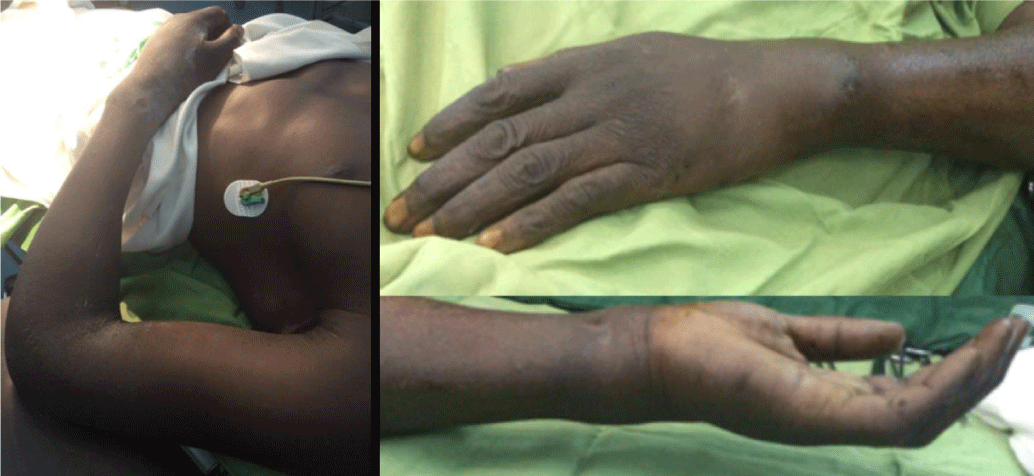
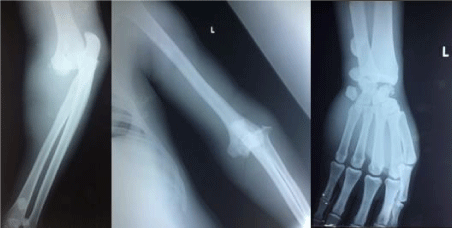
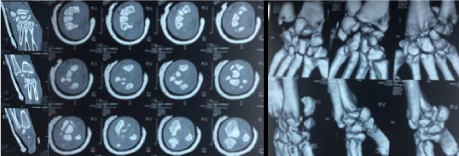
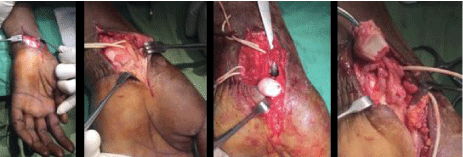
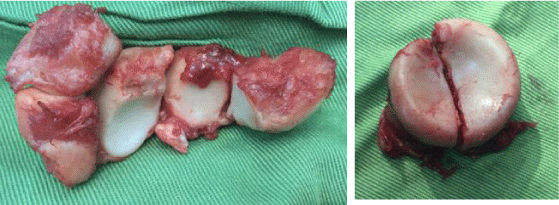
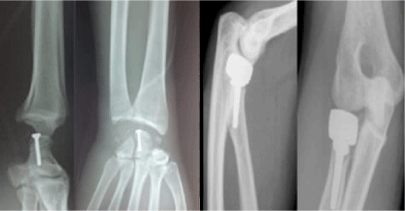

Sign up for Article Alerts